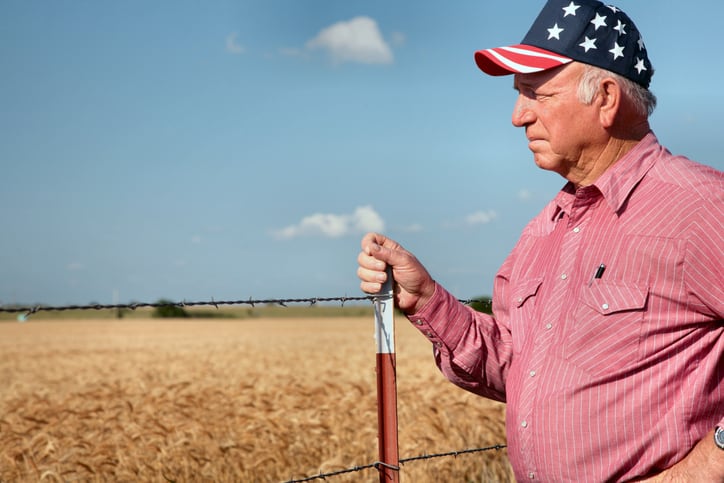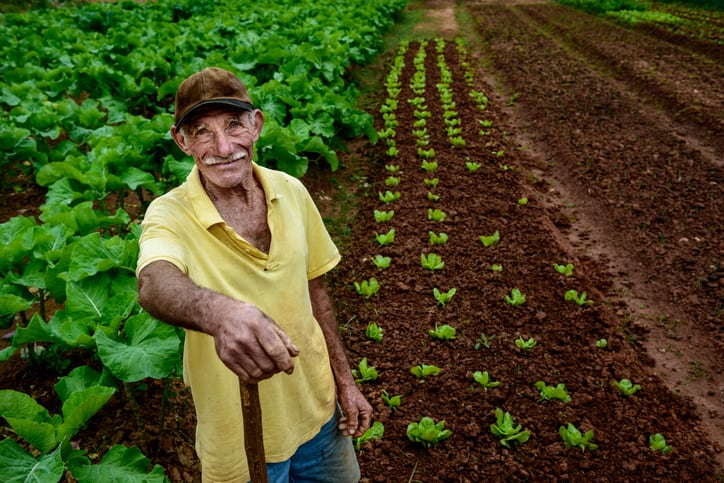There is, it appears, a significant gap in the market for the notion of climate-smart and regenerative agriculture. These practices are crucial, it’s believed, to decarbonise agriculture systems, to make farming more resilient to climate change and to reverse and restore biodiversity and soil fertility.
But is there a market in the gap? Vast amount of money has been put together in the US via government programmes such as the Environmental Quality Incentives Program (EQIP) and Inflation Reduction Act (IRA) to incentivise climate-smart agriculture as it is currently defined and promote the adoption of best practices.
But widespread adoption remains low, according to McKinsey & Company’s latest US farmer’s survey. It is the case that some soil scientists have raised doubts that the kind of agricultural practices being incentivised will be effective either because they don’t go far enough or may even increase greenhouse gas emissions.
But the problem, according to McKinsey, is a lack of operational and financial support. In other words, the risk is just too high. Despite acknowledging the long-term benefits of sustainable practices, for example, many farmers still anticipate costs of sustainable to remain 1 to 3% higher even after five years.
Dan Ryan: ‘Farms are asked to provide reams of data and take months of time to do this work before they even know if they are eligible’
McKinsey also notes that government programmes have substantially higher participation among farmers than industry programmes. Some 57% of farmers surveyed have joined in a government programme versus just 4% for industry sponsored.
According to McKinsey, this could indicate that government programmes are driving adoption and that continued programmatic support from governments and industry players may encourage more farmers to transition to sustainable farming practices.
How to make regenerative agriculture a profitable reality for farmers
There are, however, moves in the industry aimed at combining public and private resources to drive a more rapid adoption of conservation agriculture.
CIBO Technologies, for example, is using data, analytics, and software to simplify programme enrolment and help farmers more easily discover what incentives are available and what they are eligible for. CIBO partners with grower-focused organisations such as co-ops, agronomists, and retailers to help their farmer customers access USDA conservation programmes and ‘stack’ public and private incentives for adopting sustainable practices. Thus, the company believes it can help farmers maximise the potential returns on conservation practices available to them.
“Up to now there’s not been an easy way of farmers knowing what’s available to them,” CIBO CEO Dan Ryan told AgTechNavigator at the recent World Agri-Tech Innovation Summit.
The public and private sector initiatives on offer for farmers include NRCS programmes and new tax credits like the Clean Fuel Production Credit (45Z), as well as Scope 3 reduction and carbon credit programmes.

These programmes are also “super complicated for farmers to enrol in,” Ryan told us. “Farms are asked to provide reams of data and take months of time to do this work before they even know if they are eligible. So we’ve tried to eliminate that whole problem.”
The idea is that growers enter their field boundaries onto a CIBO platform and immediately see the programmes they might be eligible for. “We also try to estimate right up frot what the return will be,” Ryan said. “It breaks done one adoption barrier – namely the time and hassle of working out what your eligible for.”
Meanwhile, while there a various programmes on offer to farmers, “none on their own is really sufficient to cover the cost of the transition and also the risk that farmers receive during the transition. So the idea is how can we simplify and bring incentives to farmers more effectively and hopefully combine the incentives.”
And given there remains a lack of advance financing available to farmers to cover upfront costs, the ROI is key he said. “The idea is how can we get the most dollars to farmers.” By stacking a USDA grant on top of a corporate carbon removal programme “instead of getting 20-30 dollars an acre, you’re getting 60-90 which could really help accelerate this transition.”
Big food firms are backing regen ag: is this genuine or greenwash?
Big multinational food companies, meanwhile, often in precompetitive collaboration, are also making moves to assist decarbonisation in agriculture.
McCain Foods, for example, the world’s largest manufacturer of frozen French fries which sources directly from around 300 potato farmers across US and Canada, is working of a suite of interventions to address the need for incentives to change practices.
The company was awarded $6.9 million in USDA funding to implement a soil health project. It is also working with the Soil Health Institute in North America to develop a new programme that includes training, soil health assessments, and tailored action plans for its growers to advance regenerative agriculture practices.
McCain has also committed to operating three “Farms of the Future” by 2025, which are dedicated to developing and demonstrating regenerative agricultural practices. The first was launched in South Africa in 2022.

Climate change is, quite simply, an existential threat to the company, Jess Newman, McCain’s senior director of agriculture and sustainability, told a panel discussion at the recent World Agri-Tech Innovation Summit. “It’s about security supply. I can point to my bottom line and say exactly what it costs us. Our why for sustainability is supply security and making sure the children of the growers actually want to grow potatoes someday. It’s a pretty existential threat to our business if they don’t want to.”
It’s still early days: we need data and cross-industry collaboration
And while regenerative agriculture has been a buzzword for the last couple of years, we still remain in the earliest days of knowledge. That means the industry must come together to create things like standardised measurement, reporting, and verification (MRV) across different asset classes, geographies and certifications.
More standardised definitions are also needed, particularly in speciality crops, noted Newman. “When you’re in speciality crops there’s not a manual for regenerative cranberry,” she said.
Jess Newman: ‘When you’re in speciality crops there’s not a manual for regenerative cranberry’
And while the science is good, there’s not enough data yet to show there’s no risk. “The risk is real [of adopting new practices],” Newman said. “But I think what’s beautiful and exciting about regenerative is that if it does stabilise yeild the way we’ve seen data suggest that it can by that long-term building of soil health, someday ultimately a lot of products should be cheaper once we come through that transition period.”
The supply security narrative is resonating across the value chain. For example, General Mills and Walmart are collaborating to advance the adoption of regenerative agriculture on 600,000 acres in the US by 2030.
More MRV start-ups are emerging to de-risk the implementation of newer practices for farmers. Jack Roswell, the CEO and co-founder of Perennial Earth, for example, told the panel discussion at World Agri-Tech that the company aims to provide growers with traceability in terms of “here is the expected price that you’ll get for the implementation of practices or here is the price for a lower carbon commodity crops. I think that’s really going to start to spearhead the market.”

Be he too warned that the infrastructure isn’t there yet for these programmes to scale as we would like. More robust practice data, as opposed to estimates or default parameters, are needed. Practice data is collected directly from the sources being monitored, so industry collaboration is another must.
Lars Dyrud, CEO of soil data measurement and mapping company EarthOptics, added: “For us, tech is just about making the measurement so we know that the things we are doing are having the impact we thought they were. Sometimes they aren’t but really it’s the only way we’re going to learn which practices are effective in which region in which cropping systems. We’re still at the earliest days of that.”
Lars Dyrud: ‘Generative AI will be the new agronomists… and that will help some of the scale problems we’re facing today’
Mark Dann, agriculture sector lead at mapping software company Esri and who also manages his family’s corn and soybean grain farm in Ohio, also stressed the need for data to make it less risky for farmers to adopt new practices.
“Everyone wants farmers to improve practices and stuff like that and everybody’s wanting them to take the risk. But I think if we can use this technology to close that gap to give them more confidence that the risk isn’t as big as what they think it is and the investment that they’re going to make in the equipment is actually gonna work, I think we can move the needle.”
Will GenAI accelerate regen ag?
Greater use of generative AI might also fuel growth of regenerative agriculture, Dyrud added. “I think generative AI will be the new agronomists, which we don’t have nearly enough off in this country. And that will help some of the scale problems we’re facing today. There’s not enough technical advisers to even help all the people who would want to switch if they did.”
Other incentives are emerging such as insurance related to permanence and upfront finance to cover upfront costs for growers.
“The whole supply chain needs to work together from an incentive structure,” said McCain’s Jess Newman. “We’re going to be seeing a piloting of cost sharing at a level that we’ve probably never seen before. I think in the next five years there’s going to be a really exciting flow of the agronomic and economic datasets around some practices so no one’s just relying on the government to cost share.”





